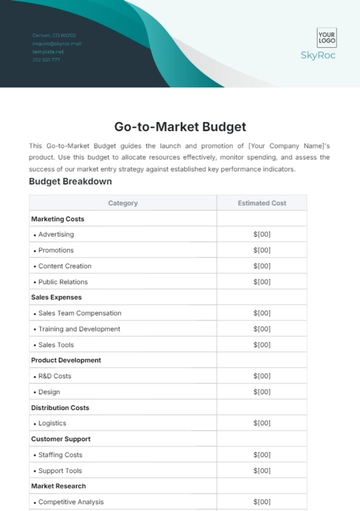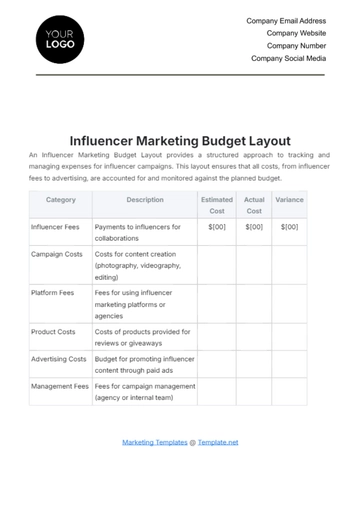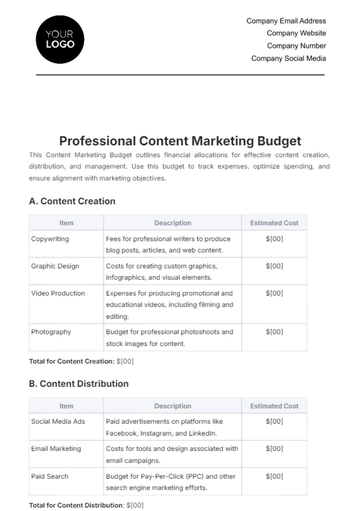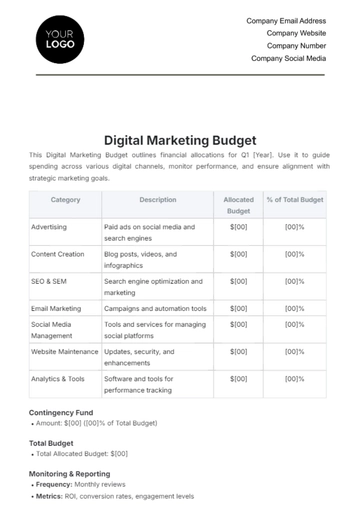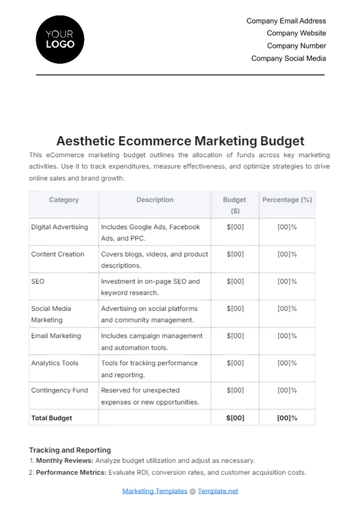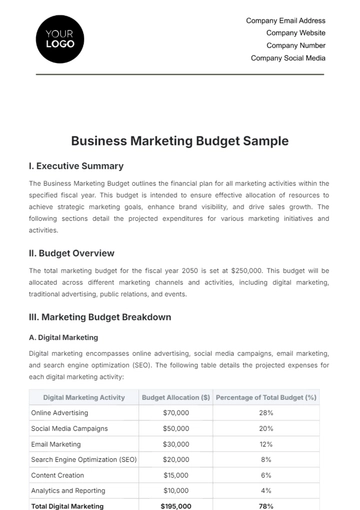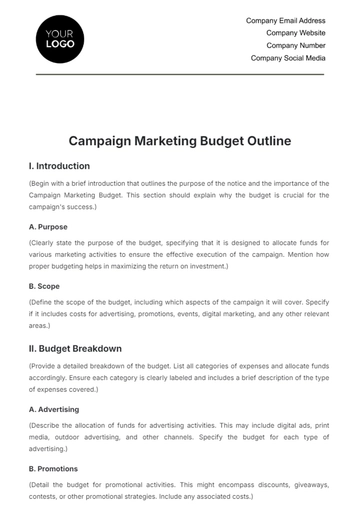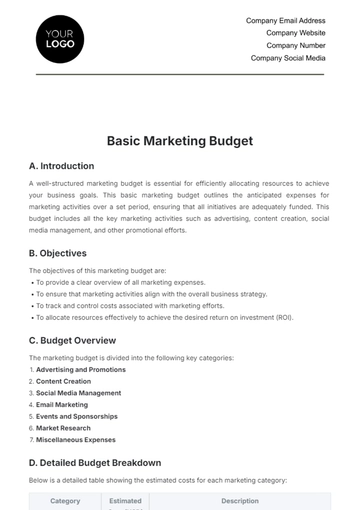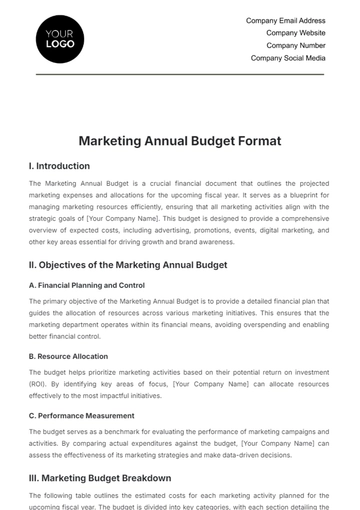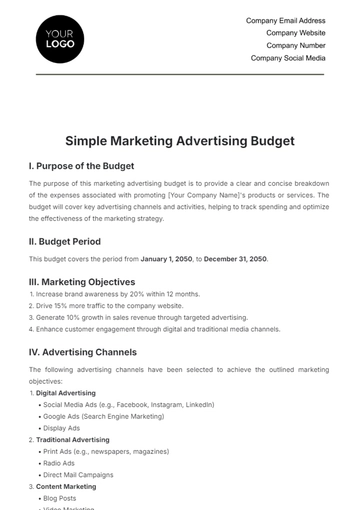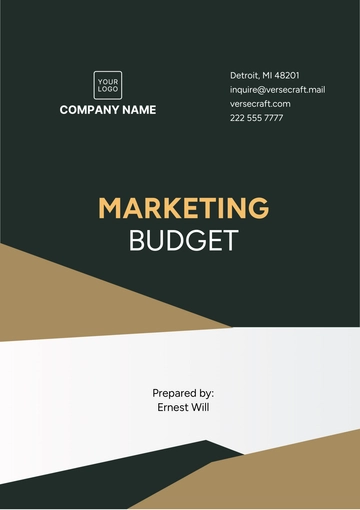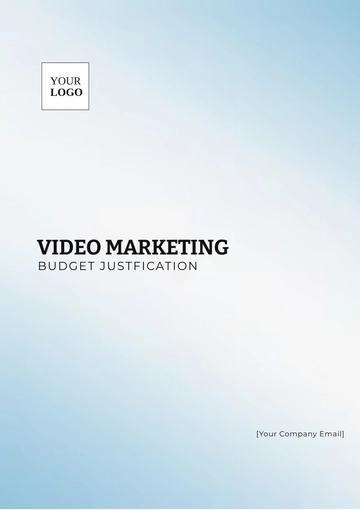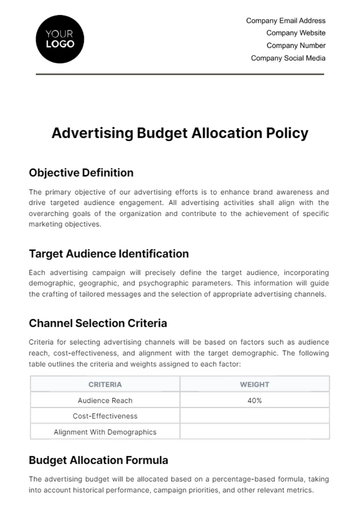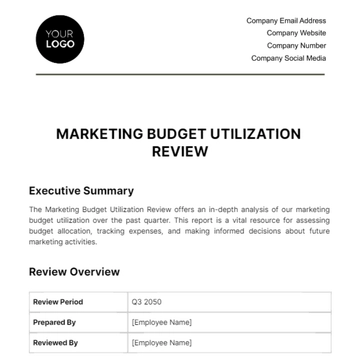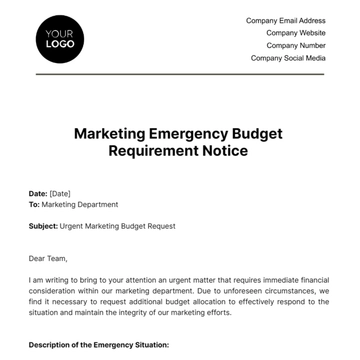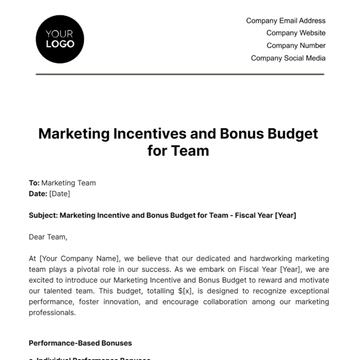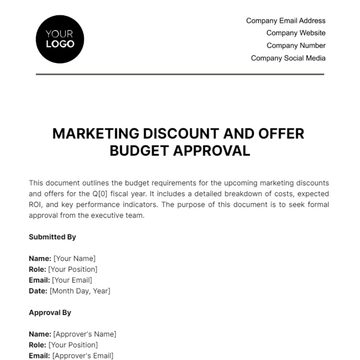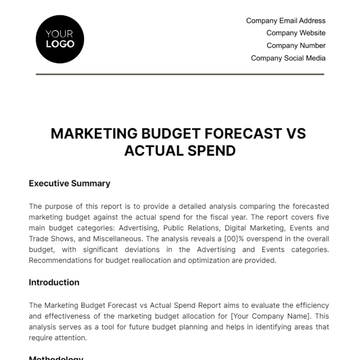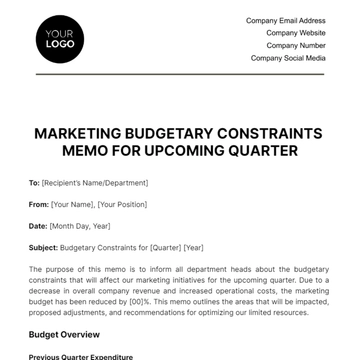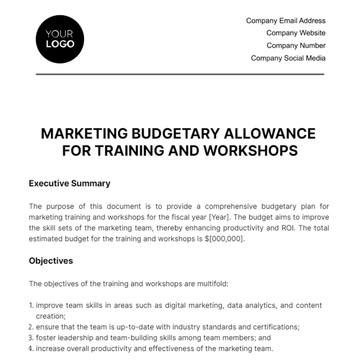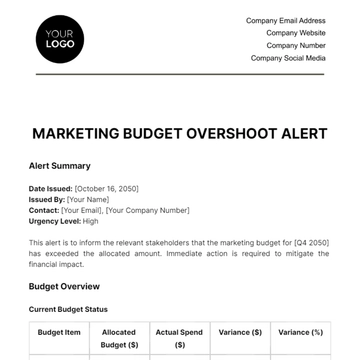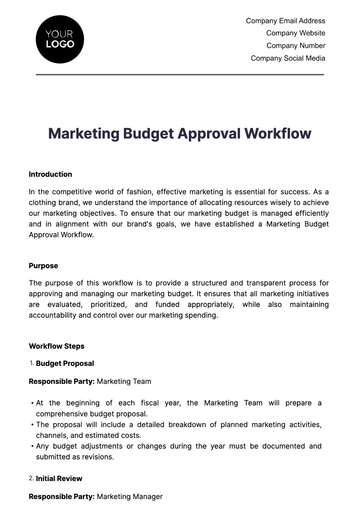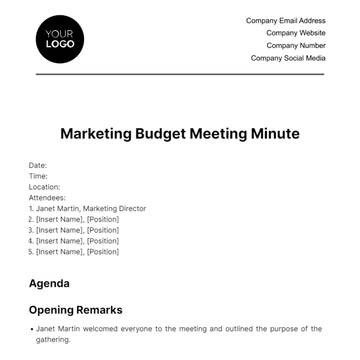Free Campaign Marketing Budget Outline
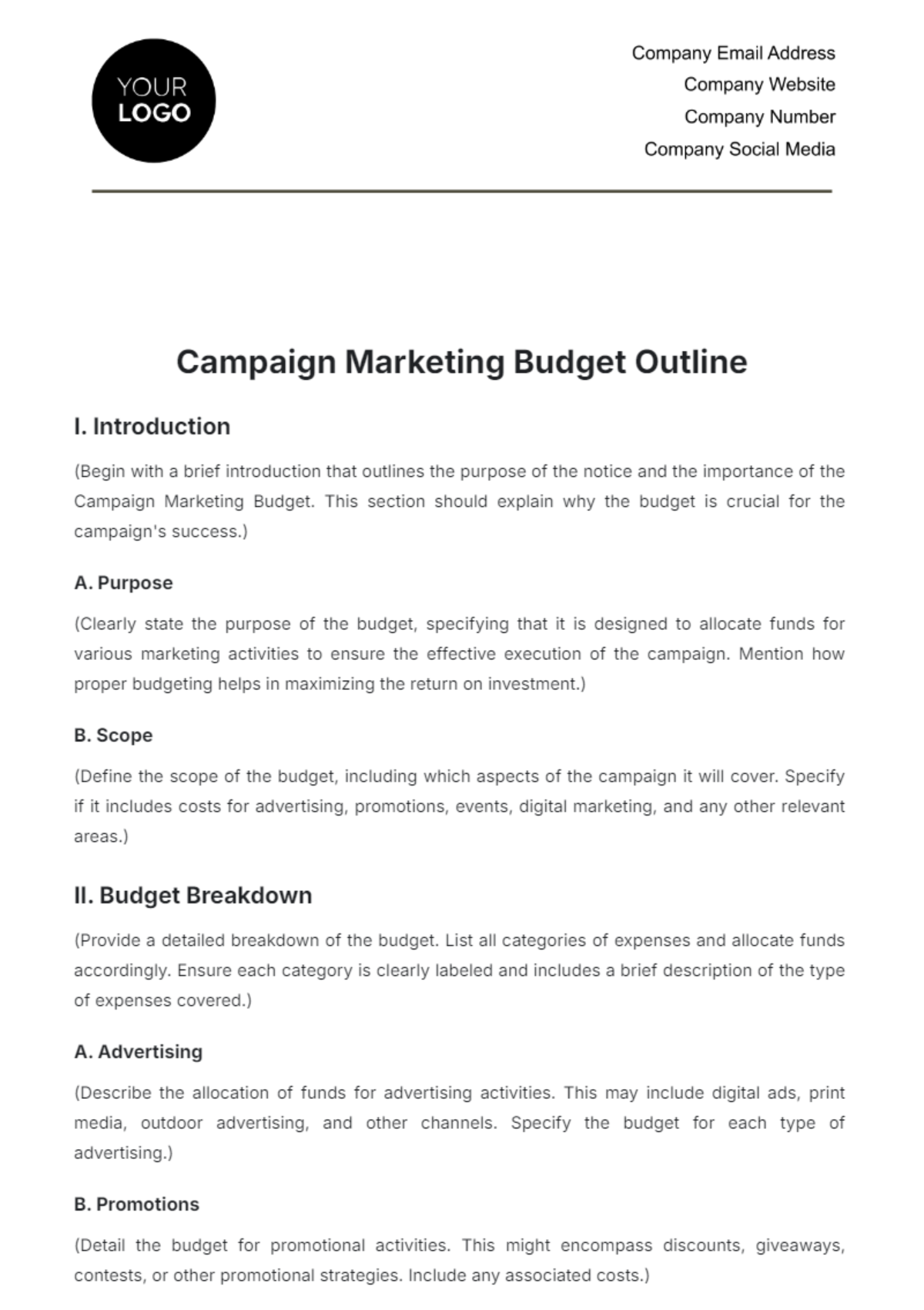
I. Introduction
(Begin with a brief introduction that outlines the purpose of the notice and the importance of the Campaign Marketing Budget. This section should explain why the budget is crucial for the campaign's success.)
A. Purpose
(Clearly state the purpose of the budget, specifying that it is designed to allocate funds for various marketing activities to ensure the effective execution of the campaign. Mention how proper budgeting helps in maximizing the return on investment.)
B. Scope
(Define the scope of the budget, including which aspects of the campaign it will cover. Specify if it includes costs for advertising, promotions, events, digital marketing, and any other relevant areas.)
II. Budget Breakdown
(Provide a detailed breakdown of the budget. List all categories of expenses and allocate funds accordingly. Ensure each category is clearly labeled and includes a brief description of the type of expenses covered.)
A. Advertising
(Describe the allocation of funds for advertising activities. This may include digital ads, print media, outdoor advertising, and other channels. Specify the budget for each type of advertising.)
B. Promotions
(Detail the budget for promotional activities. This might encompass discounts, giveaways, contests, or other promotional strategies. Include any associated costs.)
C. Events
(Outline the budget for events related to the campaign. This can include costs for venue rental, catering, entertainment, and other event-related expenses.)
D. Digital Marketing
(Break down the budget for digital marketing efforts. Include expenditures on social media advertising, search engine marketing, email campaigns, and content creation.)
E. Miscellaneous
(Include a category for miscellaneous expenses that do not fall under the primary categories but are necessary for the campaign. This might cover unexpected costs or small expenses.)
III. Approval and Review
(Describe the process for approving the budget. Mention who needs to review and approve the budget before it is finalized. Outline any necessary documentation or procedures for approval.)
A. Approval Process
(Detail the steps required for budget approval, including who will review and authorize the budget. Specify any forms or reports that need to be submitted.)
B. Review Schedule
(Provide a timeline for regular reviews of the budget. Indicate how often the budget will be reviewed and updated to ensure it remains aligned with the campaign goals.)
IV. Monitoring and Reporting
(Explain how the budget will be monitored throughout the campaign. Describe the reporting process, including who is responsible for tracking expenses and how reports will be communicated.)
A. Expense Tracking
(Detail the methods and tools used for tracking expenses. Specify who will be responsible for maintaining records and ensuring accuracy.)
B. Reporting Procedures
(Outline the reporting procedures, including how often reports will be generated, what information will be included, and how reports will be distributed to stakeholders.)
- 100% Customizable, free editor
- Access 1 Million+ Templates, photo’s & graphics
- Download or share as a template
- Click and replace photos, graphics, text, backgrounds
- Resize, crop, AI write & more
- Access advanced editor
Plan and track your campaign expenses with the Campaign Marketing Budget Outline Template on Template.net. This editable template provides a detailed framework for budgeting specific marketing campaigns. Utilize our Ai Editor Tool to customize the outline, ensuring effective budget management and campaign financial planning.
You may also like
- Budget Sheet
- Personal Budget
- Non Profit Budget
- Monthly Budget
- Project Budget
- HR Budget
- Company Budget
- Home Budget
- Weekly Budget
- College Budget
- Business Budget
- Construction Budget
- Small Business Budget
- Hotel Budget
- Annual Budget
- Home Renovation Budget
- Household Budget
- Student Budget
- Grocery Budget
- Marketing Budget
- Corporate Budget
- Startup Budget
- Manufacturing Budget
- Church Budget
- University Budget
- Annual Budget Plan
- Event Budget
- Operating Budget
- Travel Budget
- Food Budget
- IT and Software Budget
- School Budget
- Real Estate Budget
- Sales Budget
- Conference Budget
- Budget Finance
- Freelancer Budget
- Budget Advertising


